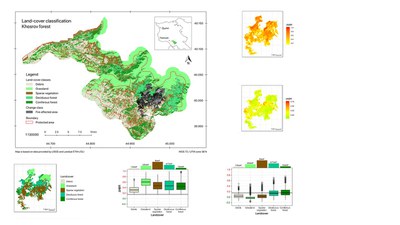Mapping and assessing fire and post-fire recovery in the Armenian Khosrov forest
Leonhard Grimm
Although fire disturbances contribute to vitality and habitat renewal they were prioritized as a key threat to the unique biodiversity of Khosrov forest, an important strict nature reserve within the Caucasian ecoregion (Bio Gama LLC and WWF-Armenia, 2016). Along with synergistic effects, fires may cause varieties of habitat changes up to the irreversible loss of species compositions and ecological linkages. While fire ecology in the Caucasian context is relatively unknown its importance for conservation management increases through climate change. (Sylvén et al., 2008; UNDP, 2012)
In my study, remote sensing methodology was combined to investigate and quantify areas which burnt in August 2017. Therefore, bi-temporal Normalized-Burn-Ratios were used to map “index-based burn severity” right after the fire and one-year post-fire for detecting initial regeneration. Further analysis focused on burn severity in relation to abiotic and environmental factors. Therefore, land-cover was mapped by a Random-Forest classificator. In addition, elevation, slope, and aspect were calculated and compared with burn severity.

Reference
- Bio Gama LLC, WWF-Armenia, 2016. Two desk study reports reviewing baseline data for developing standardized biodiversity monitoring programs (BMP) for the CNF-supported protected areas (KFSR and DNP) in Armenia. Yerevan.
- Sylvén, M., Reinvang, R., Anderson-Lilley, Ž., 2008. Climate Change in Southern Caucasus: Impacts on nature, people and society. WWF Norway, WWF Caucasus Programme.
- UNDP, 2012. Building Wildfire Management Capacities to Enhance Adaptation of the Vulnerable Mountain Forests of Armenia - Lessons from Recent Experience (No. UNDP/GEF/00051202 Project). UNDP.

